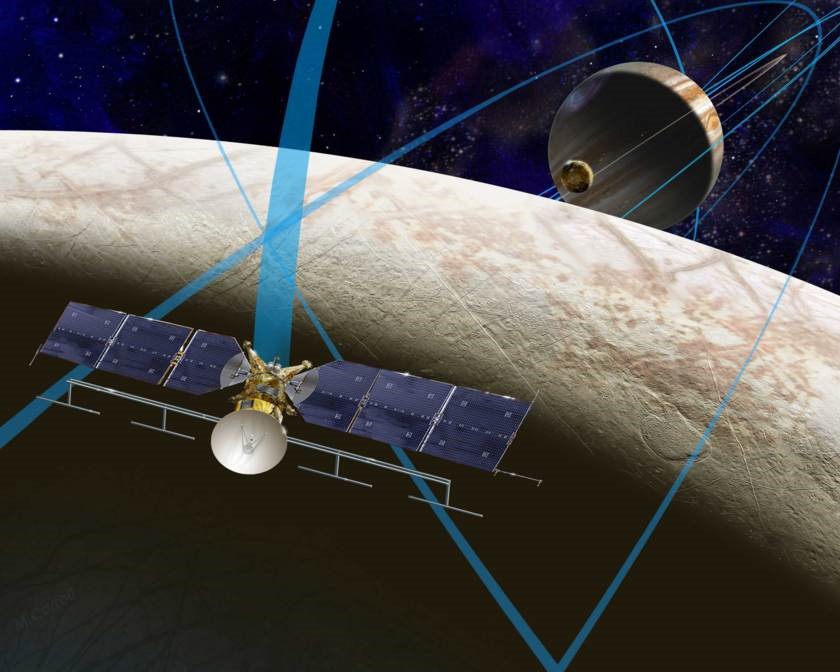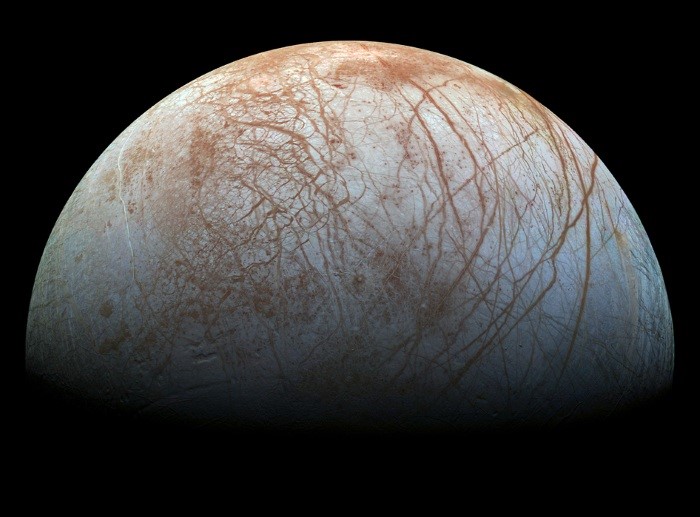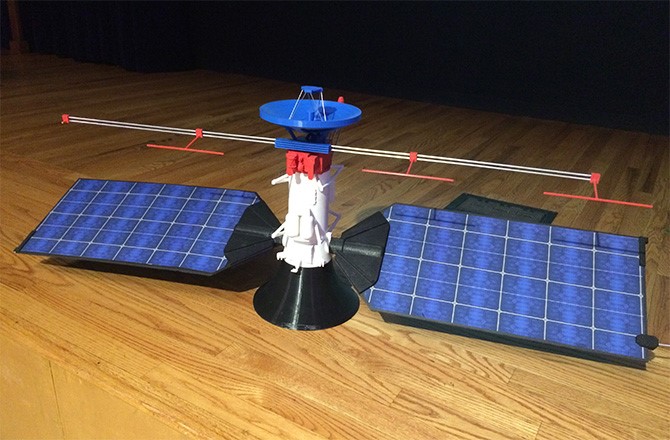Situated in orbit of the Jovian planet that is Jupiter lurks the mysterious Europa moon, a destination whose hypothetical 100 kilometer (62 mile) deep oceans may harbor the first known microbial life outside of Earth. Now, after nearly 15 years of brainstorming mission concepts, NASA has finally chosen the Europa Clipper as the mission set to test mankind’s place in the universe.

In response, the agency has asked Congress for an additional $30 million on top of the $100 million previously budgeted for a mission to Europa. Assuming NASA finishes constructing the vessel within the 10 year timeframe, we’re looking at potential flybys as early as end of the 2020’s.
The Clipper mission will transport a spacecraft deep beneath Jupiter’s radiation belt to perform 45 flybys over Europa’s surface, revealing information about Europa in much the same way that Cassini revealed about Saturn’s moon, Titan. The data will construct a comprehensive map of Europa’s surface and atmosphere, explaining the composition of the strange red veins visible in the photograph of Europa taken by the Galileo orbiter in the 1990s. Scientists also hope that the craft will acquire samples from any geysers that may exist on the surface, whose molecules may provide factual evidence accounting for the underground oceans that Hubble Space Telescope recently detected.

Biological potential
The notion of life existing on Europa is not as farfetched as one would likely imagine. For example, the tidal interactions with Jupiter’s gravity should theoretically preserve the ocean in a liquid state beneath the surface of the icy crust. Not to mention, the icy crust may act as insulator, protecting the ocean beneath from the powerful radiation above. Couple these ideas with Europa’s supposed 100 km (62 mile) ocean depth and it’s easy to draw a parallel with the Mariana Trench on the Earth, the deepest part of the Pacific Ocean.
The trench’s 11 km (6.8 mile) depth created a very cold and dark environment, unable to support a thriving ecosystem under normal conventions. Yet, the presence of thermal vents spawn a completely unique biome reliant on chemosynthesis in place of photosynthesis. What’s not to say life in Europa’s hasn’t done the same? After all, Europa’s mass and size closely resemble that of Earth’s moon, creating another favorable variable in the form of gravity.
“Europa’s ocean, to the best of our knowledge, isn’t that harsh of an environment,” said astrobiologist Kevin Hand, JPL’s Deputy Chief Scientist for Solar System Exploration, at a JPL “Icy Worlds” press conference on February 2, 2015.

The Clipper spacecraft
The spacecraft being design for the 3.5 year mission will feature a central fuselage approximately the size of a school bus, measuring 18-feet in length and sport two 29 x 4 feet solar panels on either ends that draw power from the sun. In order to protect the craft’s sensitive electronics from the debilitating radiation of Jupiter’s power magnetic field, NASA will not only outfit the craft’s sensitive electronics with heavy shielding, but select an elliptical flight trajectory that minimizes exposure to Jupiter’s radiation belts.
Flight duration
Nevertheless it could be anywhere between 10 to 16 years before the Clipper craft reaches its final destination; construction is expected to last seven the eights, with another eight years of flight time if it must rely on gravity assists around the solar system. In the remarkable event that NASA completes its new Space Launch System (SLS) within the meantime, the unmanned vehicle’s flight time could be substantially cut down to a mere three years.
Unfortunately, it will take another few decades (and billions of dollars) before an actual drilling mission is commenced. The Europa Clipper mission will at least provide the preliminary evidence needed to convince shareholders to set such an ambitious plan in motion, or least, convince us to cut our losses and leave. And it only costs $130 million there’s; there’s that.
Source: DiscoveryNews via NASA
Advertisement
Learn more about Electronic Products Magazine





